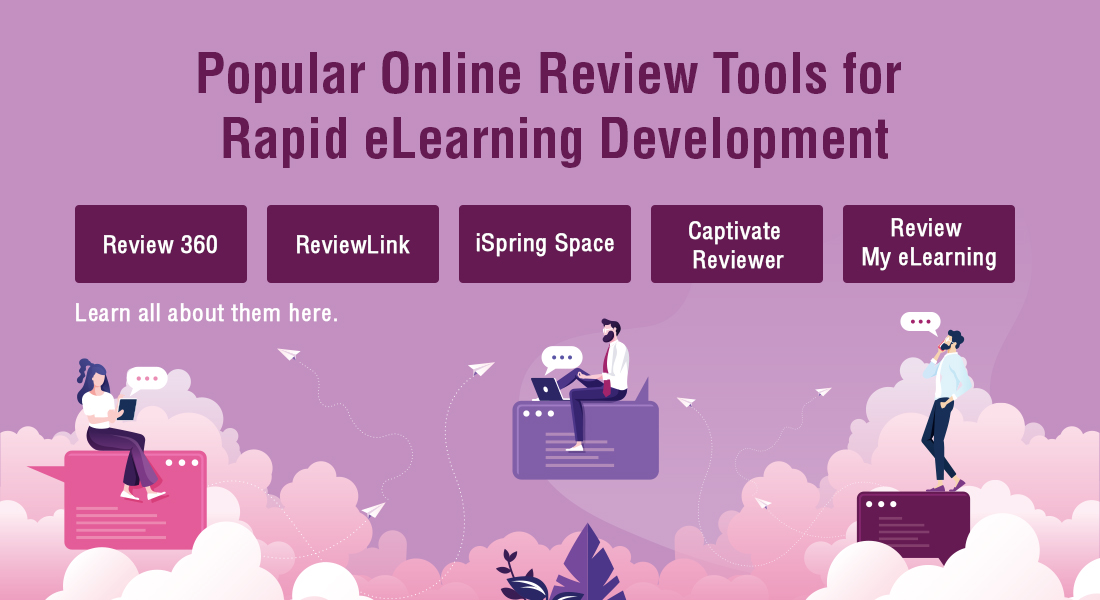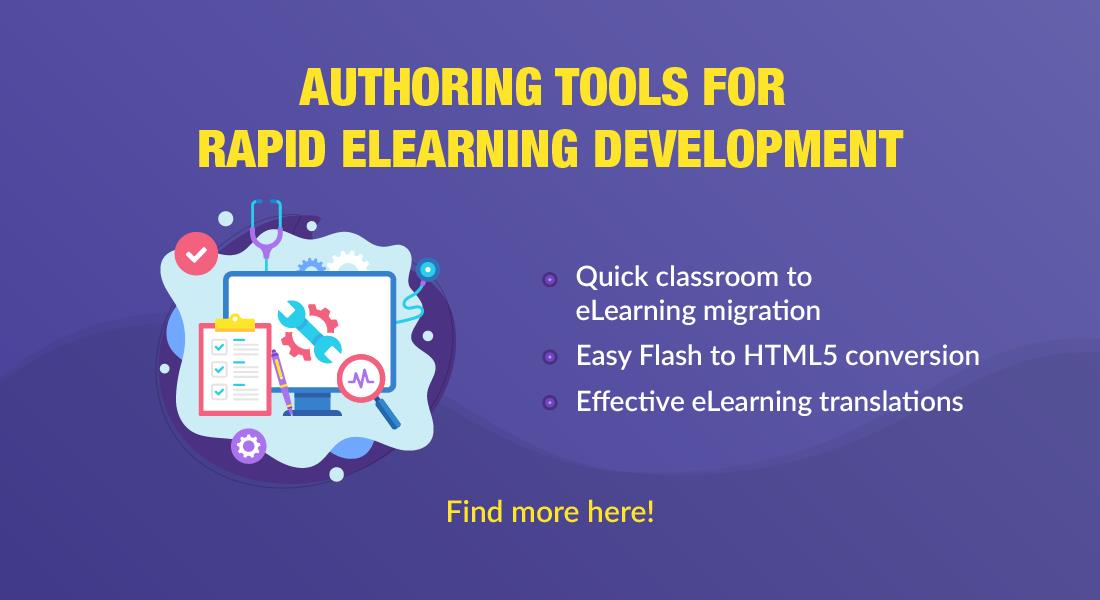eLearning Quality Matters! Include These 5 Stages in ELearning Development

In my earlier post, I talked about how a prototype can be considered to assess whether an eLearning vendor will meet your expectations. In this blog, let us see what goes thereafter. Once your organization approves the prototype developed by the vendor, the actual course development phase begins. This phase is where the eLearning course is developed with the use of authoring tools and deployed on your Learning Management System.
But, given that many teams are involved in course development with multiple sign offs at each milestone, doesn’t it seem like a mammoth task until completion? Wondering if it will affect the quality of your final eLearning output? To ease the workflow and achieve greater quality, it is necessary to standardize certain elements in their eLearning development phase. Read on to know the 5 must-have stages in an eLearning development phase.
1. Creating the Storyboard
After the prototype is approved from your side, the rapid eLearning development process is scaled up by the eLearning vendor. A storyboard will be developed for the entire eLearning course using the same strategies and visual design as used in prototype.
To put it simply, a storyboard is generally in the form of a PPT that will specify the audio and visual elements, including the various learning interactions that are being used in the final eLearning output. Since, the storyboard is the blueprint for the entire eLearning course; it pays to think through what goes into its making.
- Content Chunking: Blocks of text are chunked in the form of short sentences, bulleted lists, tables, that are easy to read and recall for learners.
- Screen Level Visualization: Visuals elements such as maps, animations, images, graphs, and videos are incorporated at the screen level to convey information.
- Designing Interactivities: To avoid passive learning, interactivities such as rollover, tabs, and slideshow are used. They can be used either to teach or to assess.
- Framing Assessments: Assessments are framed for every learning point (Formative) and also at the end of the eLearning course (Summative). Some examples of assessments are drag and drop, matching, fill in the blanks, single/multiple select.
- Creating the Audio Script: The audio script to accompany each screen is written. Here you can ensure that the audio script covers the important information and is not a mere verbatim of the onscreen text.
The storyboard will be sent for your review and if you feel any of these elements don’t match your expectations, you can ask your vendor to make changes before moving on to the next step.
2. Making the Course Functional
Once the storyboard is validated, course developers get on with the task of making the eLearning course functional. Using the selected rapid authoring tool, course developers bring life to the static storyboard. When the course is finally developed with functional features such as videos, animations, interactions, and navigation, it will be sent for your approval. In this stage, the functional course is sent for your review but without the audio. Instead, you will be provided with the audio narration script.
Why not with audio? Imagine having to record the audio all over again after you make changes either onscreen or to the audio narration. Since it is an expensive affair to re-record audio, it is ideal to review the audio narration script before the recording. Apart from saving additional cost, a lot of development time is saved as well.
3. Audio Recording
At this stage, the onscreen text and the audio narration script is updated in accordance with your feedback. Once the feedback is implemented, the audio script is sent for recording. Audio narration is an important aspect of the development phase since it increases the efficacy of the online course. Also, selecting a native narrator who matches your requirements in terms of pronunciation, accent, and tone is crucial.
4. Final Course with Audio Integration
Once the audio recording is done, audio is integrated in the eLearning course in sync with videos, animations, and onscreen text. At this stage, the fully functional course – with audio – will be sent for your review. When you approve the final course, it is ready to be launched on the LMS for functionality check.
5. Checking Course Functionality
The final stage in the development phase is to check the functionality of the eLearning course on an LMS. Before launching the course, the vendor ensures that elements such as tracking, assessment score and status, reports, bookmarking, exit buttons, navigation, videos, and interactivities functions properly on the LMS. Once done, the course is finally launched on your LMS, and is ready to be rolled out to your learners.
When these stages are followed, you not just save development time and additional cost, but are also involved at every stage of the development phase. Your eLearning vendor will not proceed to the next stage until you approve the previous one. But, what happens when these stages are not followed? Chances are the online course might not turn out the way you expected. Hence, why jeopardize the quality of your eLearning course? Follow these steps 5 stages and ensure an effective eLearning course.





